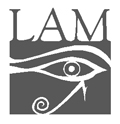The eLitMed.hu medical portal uses computer cookies for convenient operation. Detailed information can be found in the Cookie-policy.
Lege Artis Medicinae - 2006;16(11)
Content
[TREATMENT OF GASTROESOPHAGEAL REFLUX DISEASE]
[In the acidic type of gastroesophageal reflux disease treatment is based on the use of proton pump inhibitors. Efficiency of the treatment is primarily assessed by the changes in symptoms. A long-term, continuous drug use is invariably necessary. In typical cases an increased dose or combination therapy is rarely required, however, in the presence of extraesophageal symptoms, the use of higher doses has been found to be beneficial. The minimum efficient drug amount is usually determined by gradually decreasing the dose. Surgery is mainly recommended for young patients, but it is indispensable in the management of complications or in volume reflux. Endoscopic antireflux therapy is still considered a clinical trial. Treatment of Barrett’s oesophagus by drugs or antireflux surgery does not decrease the incidence of Barrett’s cancer - the mostly recommended approach is endoscopic ablation.]
[TREATMENT APPROACHES OF CHRONIC HEPATITIS B IN HUNGARY]
[Today, there are less patients with active chronic hepatitis B requiring treatment than patients with chronic hepatitis C. However, the course and outcome of chronic hepatitis B is usually more severe, therefore, the disease has not lost importance. The most dangerous risks are the development of liver cirrhosis and hepatocellular carcinoma. The disease may present in various forms. Symptom-free carriers only need follow-up and hepatologic care. In the active stages with elevated liver enzymes and high level of viral nucleic acid (either HBeAg negative or positive), however, antiviral treatment is strongly indicated. There are two main forms of treatment. Alfa-interferon-based therapy, which is applied for a defined period of time, has a direct antiviral and immunomodulatory effect, but has several adverse effects. Long-term nucleoside analogue treatment represent the other treatment modality. These drugs are administered orally, have minimal side effects, but after some time resistant mutants may develop. Traditional interferon has recently been replaced by pegylated interferon alfa-2a with much better pharmacokinetic properties. Lamivudine has been in use for the longest time of the nucleoside analogues. Its efficacy is high, but after 3 to 4 years of treatment, resistant mutants appear in about 70% of cases. Of the most recent compounds, adefovir dipivoxil has recently become available in Hungary; it is primarily recommended in cases with lamivudine resistant mutants. There are promising new drugs in the stages of clinical trial; of these, entecavir has already been approved in the United States.]
[THE PATHOPHYSIOLOGICAL IMPORTANCE OF FAT TISSUE - INTRAABDOMINAL OBESITY]
[Obesity affects a significant proportion of the population in Western countries. Metabolic changes that are associated with obesity lead to metabolic syndrome, a significant risk factor of cardiovascular mortality. Body mass index, which is used to describe the extent of obesity, is not suitable on its own to predict cardiovascular risk or assess metabolic changes, because it doesn't provide information on the distribution of accumulated fat within the body. Several studies have shown that it is the central/abdominal/visceral type of obesity that significantly increases cardiovascular morbidity and mortality. Visceral and subcutaneous fat tissue differ both in their function and the biological effects of adipocytokines secreted by them. Apart from the known effects of free fatty acids on insulin resistance and consequently to other metabolic parameters, adipocyte-derived adipokines have been shown to have a beneficial, antiatherosclerotic effect. In order to precisely estimate the obesity-related cardiovascular risk in everyday practice, not only body mass index, but waist circumference, a marker of visceral obesity, should also be measured.]
[INSULIN ASPART IN THE CLINICAL PRACTICE]
[Insulin aspart (B28 Asp-insulin), which is produced by recombinant DNA technology, is a fast-acting insulin analogue. Due to the aspartate for proline substitution at position 28 of the Bchain, the insulin molecule's tendency for selfassociation is diminished, therefore, insulin aspart rapidly dissociates into dimeric and monomeric forms and absorbs quickly and easily after subcutaneous administration. Compared to human regular insulin, insulin aspart has a faster onset of activity, a higher plasma peak and a shorter duration of action. Overall, the pharmacokinetic profile of insulin aspart better mimics the physiological postprandial insulin secretion. Therefore, insulin aspart can be used for prandial insulin substitution in order to decrease postprandial blood glucose excursion. It should be administered immediately before meals, but some observations suggest that it can also be used after finishing meal. This allows a more flexible lifestyle for patients. Insulin aspart can be used in both type 1 and type 2 diabetes. Compared to regular human insulin, a moderate decrease in the HbA1c values and fewer nocturnal hypoglycaemic events are expected from insulin aspart use. Insulin aspart is appropriate for pump treatment as well. It has recently been approved for use in pregnancy, whereas for children and adolescents the expected benefits should be weighed against the more modest clinical experience available. Similarly to other insulin analogues, results of long-term clinical investigations with insulin aspart with regard to the development of complications are not yet available.]
[A NEW WAY TO TREAT ALLERGIC ASTHMA: ANTI-IGE THERAPY]
[Immunoglobulin E (IgE) plays a central role in the pathogenesis of the inflammation of the bronchial mucosa and airway hyperreactivity, which in turn produces the symptoms of allergic bronchial asthma. Omalizumab, the recently developed anti-IgE monoclonal antibody binds to the Cε3 region of the IgE molecule and thus prevents binding of the IgE to the surface of FCεRI receptor bearing cells (mast cells, basophils and antigen presenting dendritic cells). In the absence of cell-bound IgE, these cells are not activated and thus do not release inflammatory mediators and proinflammatory cytokines upon allergen exposition. Treatment with omalizumab significantly decreases the number of bronchial mucosal eosinophils and FCεRI positive cells, and the FCεRI receptor expression of the latter. Double blind controlled clinical studies have demonstrated that omalizumab treatment reduces the number of exacerbations and emergency room visits, the β2-agonist requirement and the dose of inhaled steroids, improves exspiratory airflow limitation, asthmatic symptoms and asthma-related quality of life in patients with moderate to severe allergic asthma. Low baseline FEV1, the use of high dose inhaled corticosteroids and a history of emergency asthma treatment in the past year are significant predictors of a better response to omalizumab. Omalizumab is tolerated well by patients. With the exception of local skin reactions, no significant difference in adverse events between patients taking omalizumab and control groups have been reported. According to the GINA (Global Initiative for Asthma) stepwise therapy protocol of asthma, omalizumab is indicated for severe asthmatics whose symptoms can not be controlled by inhaled corticosteroids and long-acting β2 agonists.]
[THE PHENOMENON OF BURNOUT IN VIEW OF THE HUNGARIAN AND INTERNATIONAL LITERATURE]
[There is plethora of international publications on the topic of burnout among health professionals. The most comprehensive study in Hungarian on this issue was written fifteen years ago by psychiatrist Sandor Fekete. In the past fifteen years there has been a growing interest among both the scientific community and the public in studies on health psychology, behavioural sciences, sociology of health and quality of life as well as in the harmful effects of work stress. The first part of the study presents clarification of the concept of burnout, its development, course, assessment and treatment, whereas the second part gives a brief overview of the history of burnout research in the past thirty years with special focus on the most recent international and Hungarian literature, as well as on changes in research trends.]
1.
Clinical Neuroscience
Is there any difference in mortality rates of atrial fibrillation detected before or after ischemic stroke?2.
Clinical Neuroscience
Factors influencing the level of stigma in Parkinson’s disease in western Turkey3.
Clinical Neuroscience
Neuropathic pain and mood disorders in earthquake survivors with peripheral nerve injuries4.
Journal of Nursing Theory and Practice
[Correlations of Sarcopenia, Frailty, Falls and Social Isolation – A Literature Review in the Light of Swedish Statistics]5.
Clinical Neuroscience
[Comparison of pain intensity measurements among patients with low-back pain]1.
Clinical Neuroscience Proceedings
[A Magyar Stroke Társaság XVIII. Kongresszusa és a Magyar Neuroszonológiai Társaság XV. Konferenciája. Absztraktfüzet]2.
3.
Journal of Nursing Theory and Practice
[A selection of the entries submitted to the literary contest "Honorable mission: the joys and challenges of our profession" ]4.
Journal of Nursing Theory and Practice
[End of Life and Palliative Care of Newborns in the Nursing Context]5.
Journal of Nursing Theory and Practice
[Aspects of Occupational Health Nursing for Incurable Patients ]


























